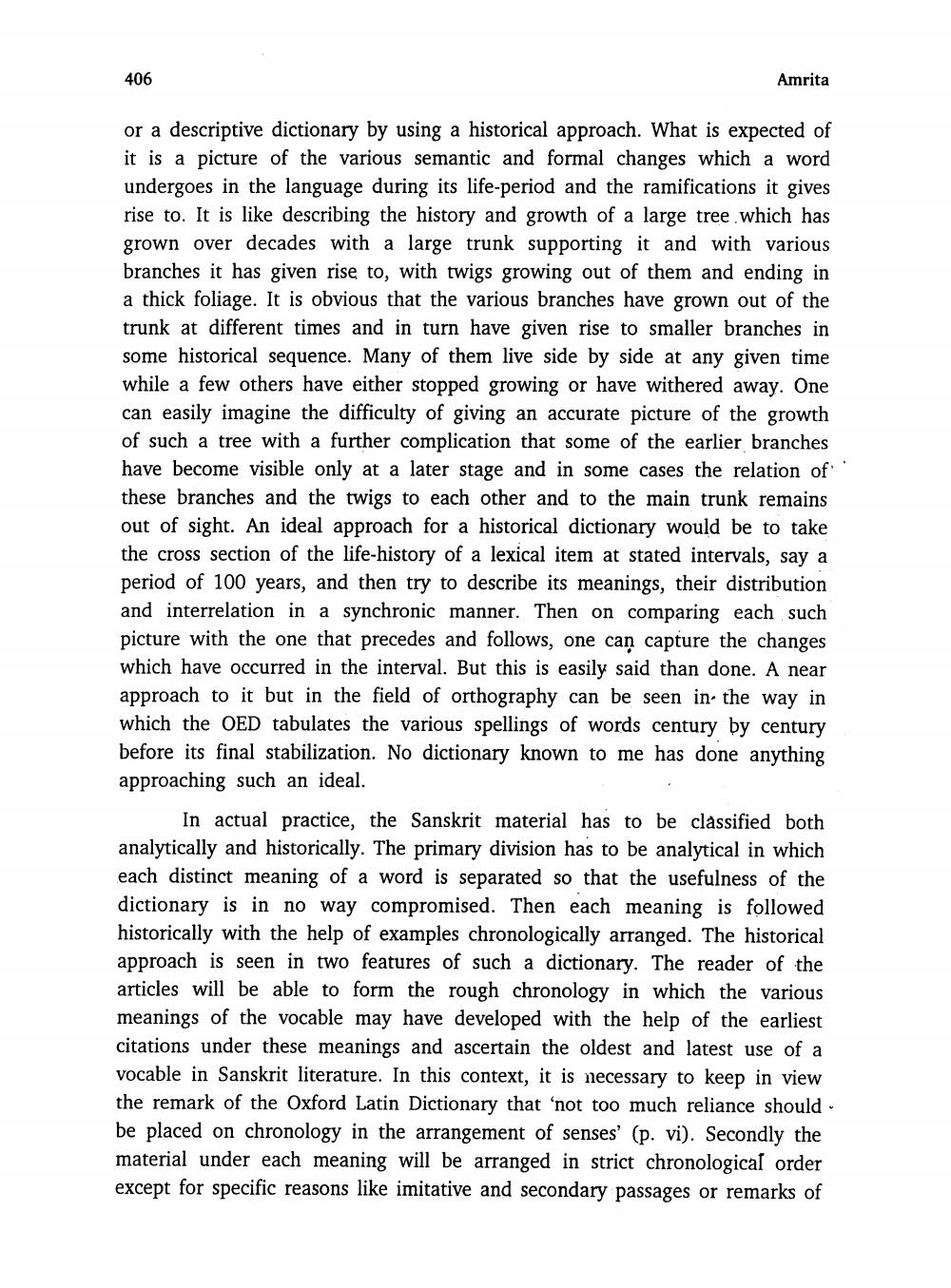________________
406
Amrita
or a descriptive dictionary by using a historical approach. What is expected of it is a picture of the various semantic and formal changes which a word undergoes in the language during its life-period and the ramifications it gives rise to. It is like describing the history and growth of a large tree which has grown over decades with a large trunk supporting it and with various branches it has given rise to, with twigs growing out of them and ending in a thick foliage. It is obvious that the various branches have grown out of the trunk at different times and in turn have given rise to smaller branches in some historical sequence. Many of them live side by side at any given time while a few others have either stopped growing or have withered away. One can easily imagine the difficulty of giving an accurate picture of the growth of such a tree with a further complication that some of the earlier branches have become visible only at a later stage and in some cases the relation of these branches and the twigs to each other and to the main trunk remains out of sight. An ideal approach for a historical dictionary would be to take the cross section of the life-history of a lexical item at stated intervals, say a period of 100 years, and then try to describe its meanings, their distribution and interrelation in a synchronic manner. Then on comparing each such picture with the one that precedes and follows, one can capture the changes which have occurred in the interval. But this is easily said than done. A near approach to it but in the field of orthography can be seen in the way in which the OED tabulates the various spellings of words century by century before its final stabilization. No dictionary known to me has done anything approaching such an ideal.
In actual practice, the Sanskrit material has to be classified both analytically and historically. The primary division has to be analytical in which each distinct meaning of a word is separated so that the usefulness of the dictionary is in no way compromised. Then each meaning is followed historically with the help of examples chronologically arranged. The historical approach is seen in two features of such a dictionary. The reader of the articles will be able to form the rough chronology in which the various meanings of the vocable may have developed with the help of the earliest citations under these meanings and ascertain the oldest and latest use of a vocable in Sanskrit literature. In this context, it is necessary to keep in view the remark of the Oxford Latin Dictionary that 'not too much reliance should be placed on chronology in the arrangement of senses' (p. vi). Secondly the material under each meaning will be arranged in strict chronological order except for specific reasons like imitative and secondary passages or remarks of




